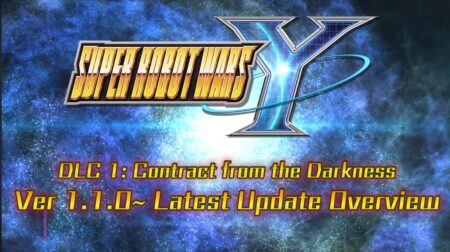Platform Reviewed: PS4
Platforms Available: PS4, PS3, PS Vita
Publisher: Square Enix
Developer: Square Enix Business Division 5
Release Date: October 11, 2016
MSRP: USD 59.99
That is one of the first lines the game will tell you as you start playing. Right before it throws you into the world for you to explore. And most of you likely come into this game with ample knowledge on its genre. So you take your first step into the sandbox with confidence and a lot of expectations.
I will be honest though. I came into this game mainly not because of the Minecraft aspect, but its Dragon Quest theme. I’ve been a fan of the franchise for quite a long time and it excites me to see what they have to offer next. Dragon Quest Builders piqued my interest; even more so that they are tackling a genre I have never attempted to touch.
Dragon Quest Builders is set in a world where humans have forgotten to build. You, the Legendary Builder, is profesized to save the world from the darkness that has engulfed the world through your talent: BUILDING. DQ Builders is a sandbox game. In a nutshell, it is a game where you gather materials, use the materials to create new tools or materials, then use those to gather or create new tools or materials. Sounds complicated, but you’d be surprised how easy it is for you to get the hang of it. And that is pretty much all you need to know. You are left to fend for yourself and the villagers that you gather. The game does not fully explain what you need to do; it allows you to tinker around and discover things for yourself. You build and build and discover and build. As simple the concept is to think about, it’s actually very beautiful.
This level of freedom though is overwhelming for a beginner (to the genre *winks*) like me, but also addicting; I always end up looking out for what I can make next, then I gush about how I can make that thing better; or beautiful. But I am surprised at how focused the game is despite its freedom. As you are motivated to do quests in order to progress. I guess this is what separates DQ Builders from most (if not all) titles of the same genre: The game is driven by a story. It is divided by 4 chapters where you have to start fresh every new chapter. This may sound discouraging for those who like a bit of progression in their game, but it actually fits nicely into its design. Think of it like a puzzle game, where you are presented with different challenges in every chapter; solving it is very satisfying.
But of course, for those who don’t want to be bound by a story, the game offers a free mode right after you finish the first chapter which can be done fairly easily. Some content is locked in this mode though which can be unlocked by finishing the different challenges set on every chapter.
This is the game’s boon and also its bane. It is designed for you to get into the story while it tries its best to let you experience the game by yourself, and it sometimes puts you in a situation where you don’t know what to do to progress as your quest is just giving you a vague hint, and is somehow confident that you’ll figure it out. This is a minor personal gripe though overall, but I would argue that if a game is able to keep me playing without having to look through a guide at first playthrough, then that is a plus for me.
Speaking of “plus” you do not level up in this game. Instead, your town does through a point system. Creating rooms within your town generate points, and you may increase your points by upgrading the materials you are using or through decorations. This is important in the sense that you will reach a point in the game where it requires you to level up your town. You, on the other hand, grow stronger through your equipment that advances in tiers through the materials available to you; from rags, to clothes, to leather, iron, and so on. The rooms you create also play a big part in your strength as they buff you with bonuses simply by just being there. One room increases the durability of your equipment, while another gives you a passive that lets you recover your health over time, and many more. This is an amazing concept in player progression. Your character is as strong as your town.
Your town is filled with villagers that grow in number as you progress through the story. They provide you with quests and offer a bit of backstory if you choose to talk to them. They will wander around your town doing seemingly mundane things, but they actually will use the rooms that you created, and will provide you with materials or food or potions for you to use! Some will defend the town from occasional invaders while others will flee into their rooms in fright; giving them a bit of personality which is another plus for me. It allows you to care for them if you actually take time to pay attention to them, making the game more meaningful in a way. In my case, I managed to figure out that one character likes to take a break in the gardens in the afternoons and never seem to want to talk to a certain person (as he talks to almost everyone). True enough, they do not trust each other if you talk to the two. That attention to detail is remarkable and really speaks of the depth of the seemingly simple game.
While I am overly impressed by the villagers, they are also my source of disappointment. If you are still paying attention, you may be seeing a pattern in my experience with this game by now. I took the slow creative route of building my village; making use of almost every material available to me and designing intricate buildings that overlap each other; from tall 3 floor residential spaces to underground work stations with winding tunnels and spiraling stairs to save the limited space of towns. But I found out that the villagers can only do so much in finding their way into their destinations and they may not use the complicated tunnels or stairs you created for them to use. I learned that I have to design rooms with a more direct path to it and that’s a bit of a downer, given that this kind of restricts the freedom I thought I have with this game. And while it may also be considered a minor thing in the end, it leaves me wishing it was better to allow me to be more creative with what I build.
Having tackled the sandbox aspect of the game, let me talk about the Dragon Quest side of it. At the start, I admitted that I never touched any game sandbox related, so I have very little knowledge of it. But I am aware of it and have seen it being played here and there. The concept does interest me, and as I have discussed, I got addicted to it, but every time I look at Minecraft and those other related titles, there is nothing there visually that I like; the graphics wasn’t appealing to me; discouraging me to play at all. In this game, however, the signature Akira Toriyama cartoony visuals captivated me. And its beautiful that they still managed to keep the Dragon Quest aesthetic into it; everything feels nostalgic, familiar. It fits seamlessly into the gameplay. The music and sound screams DQ in every way that, weirdly enough for me, the game feels more Dragon Quest than it is a Minecraft.
Funnily, my expectations on the game’s story was very much similar to how I felt about the story of a related spin-off, Dragon Quest Heroes; which is VERY LOW. And I should have learned, I learned. As beneath the whimsical, laid back tones of the events that you encounter, lies a serious and borderline dark story; something that I should have seen coming as a Dragon Quest fan. Each chapter offers a different theme that sent my emotions flying to different degrees of highs and lows; of despair and hope. This is what always impresses me with any Dragon Quest story; that through all the epic overarching ‘world is in danger’ kind of story, there is always time to talk about a character’s fears and anxieties, his dreams and ambitions, and everything in between. There is a focus in developing their personality, even the ever so silent protagonist. This leaves you invested in the game; you get that feeling that there will be a good pay off in the end, and there is! So you keep playing.
To end, I rate. (in a semi-casual way) I give this game an 8/10. The Dragon Quest theme powered by the mechanics of a sandbox was beautifully melded into this game; pun intended. It is ideal for those who want to just sit, relax and have fun with a very colorful game. It offers a level of replayability through its challenges; but overall it is a fairly easy game, which can be a bad thing, I admit. Its focus on the story is what separates it from the genre, and overall offers a unique experience for everyone enjoy.
This review is based on a retail copy purchased by the author.










